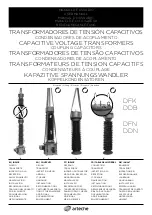
Nova Engineering also offers professional NovaRoam™ 900 installation at the user’s discretion. This service
provides the added performance benefit of generating a site survey to achieve the most reliable links possible.
Nova Engineering’s custom design expertise identifies the optimum RF channels, antennas, antenna heights,
operating mode, and network topology.
NOTE
This equipment has been tested and found to comply with the limits for a Class A digital device, pursuant to
Part 15 of the FCC Rules. These limits are designed to provide reasonable protection against harmful
interference when the equipment is operated in a commercial environment. This equipment generates, uses, and
can radiate radio frequency energy, and, if not installed and used in accordance with the instruction manual,
may cause harmful interference to radio communications. Operation of this equipment in a residential area is
likely to cause harmful interference in which case the user will be required to correct the interference at this own
expense.
The NovaRoam™ 900 can be configured to operate in any of seven DSSS modes with burst data rates from
21kbps to 1.008Mbps, as shown in Table 1. This broad range of nearly 50:1 enables the user to select the best
combination of throughput and range to establish a robust link. While increasing the data rate is generally
desirable in order to accelerate packet transfer, this benefit comes at the expense of decreased range. Links are
generally configured with the highest possible data rate consistent with reliable communications. Nova
Engineering has built flexibility into the NovaRoam™ 900 through these multiple DSSS modes so that a single
transceiver can close short haul links at rates exceeding 1Mbps or span distances exceeding 30km with reduced
throughput. Two types of modulation are employed, binary phase shift keying (BPSK) and quadrature phase
shift keying (QPSK), depending on the particular mode that has been selected. BPSK achieves better receiver
sensitivity than QPSK at comparable data rates, a benefit that can be used to either improve link margin or
extend the range of the NovaRoam™ 900.
The first 3 NovaRoam™ 900 modes have much narrower bandwidth than the remaining modes. While this does
result in lower burst data rates, it dramatically improves the chances of avoiding interference from other
systems. This is particularly useful in congested urban environments where there may be little opportunity to
obtain more than 1MHz of relatively unoccupied spectrum. The NovaRoam™ 900 also includes SAW IF filters
in the receiver to provide superior resistance to adjacent channel interference. The 3dB bandwidth of these
filters are 2.7MHz for the narrowband modes and 9.6MHz for the wideband modes of operation.
Table 1 NovaRoam™ 900 Modes Span Broad Range of Wireless Applications
Data
3dB
Transmitter
Receiver Sensitivity
Processing
Mode
Rate
Modulation
Bandwidth
Power
No FEC
FEC
Gain
1
21kbps
BPSK
1.2MHz
+23.0dBm
-108dBm
-109dBm
18.0dB
2
42
BPSK
1.2
+23.0
-105
-106
14.9
3
101
BPSK
1.2
+23.0
-98
-100
11.1
4
159
BPSK
4.3
+28.5
-101
-102
14.9
5
317
QPSK
4.3
+28.5
-98
-101
14.9
6
655
QPSK
4.3
+28.5
-93
-97
11.8
7
1008
QPSK
5.8
+28.5
-89
-94
11.1
The NovaRoam™ 900 operates in the 902 to 928MHz ISM band that has been authorized in accordance with
§15.247 of the FCC Rules. The transceiver includes integral frequency synthesizers that can be used to tune the
NovaRoam™ 900 to select any RF channels on a 0.5MHz grid. This enables the user to deploy the NovaRoam™
900 at a channel in the RF spectrum that is minimally congested, thereby avoiding harmful interference. If
desired, the unit can also be set up to transfer data over different channels in the forward and return links. For
instance, 910MHz might be selected to send packets from unit A to unit B while 920MHz might be used to relay
information from unit B to unit A. This degree of flexibility can be used to further reduce susceptibility to
interferers that are physically close to NovaRoam™ 900 transceivers. The 3dB bandwidth of the NovaRoam™
900 signal ranges from 1.2 to 5.8MHz, depending on the operating mode, as indicated in Table 1. Therefore even
























